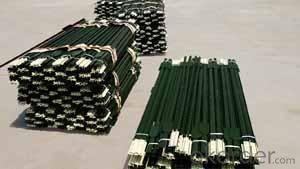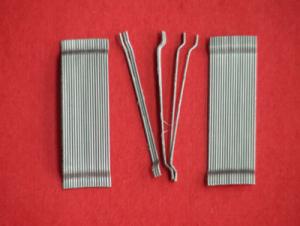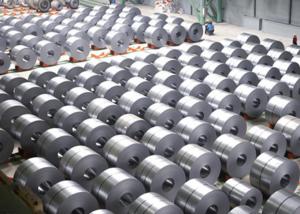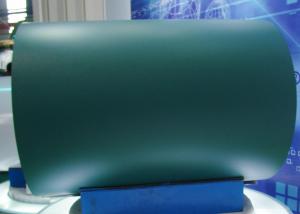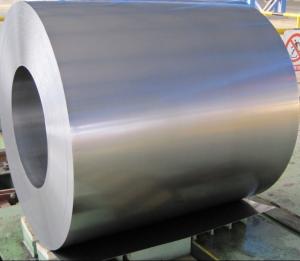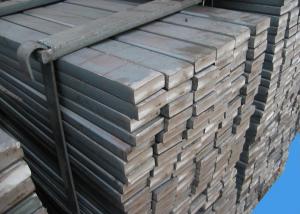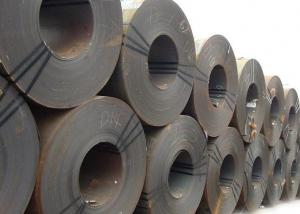T POST AND L POST
- Loading Port:
- China Main Port
- Payment Terms:
- TT OR LC
- Min Order Qty:
- -
- Supply Capability:
- -
OKorder Service Pledge
OKorder Financial Service
You Might Also Like
1、FEATURES :
Our products T fence post,Stud T fence post and L fence post and relational
product are mainly used in Grapery,Farm,Industrial park,National security and so on.
2、PROCESSING :
(1) Electrostatic spraying
(2) Electrostatic spraying after hot-dip galvanizing
3、PACKING :
Wrapped with plastic film rushen,play care(used wood care/plywood)
Stud T post :
Black Post (Non-painted Without Spade) | ||||||||
Light Duty
| 0.83LBS/FT | 4' | 5' | 6' | 7' | | | |
0.85LBS/FT | 4' | 5' | 6' | 7' | | | | |
0.90LBS/FT | 4' | 5' | 6' | 7' | | | | |
0.925LBS/FT | 4' | 5' | 6' | 7' | | | | |
0.95LBS/FT | 4' | 5' | 6' | 7' | | | | |
Regular Duty | 1.10LBS/FT | 4' | 5' | 6' | 7' | 8' | 9' | 10' |
1.15LBS/FT | 4' | 5' | 6' | 7' | 8' | 9' | 10' | |
1.25LBS/FT | 4' | 5' | 6' | 7' | 8' | 9' | 10' | |
Heavy Duty | 1.33LBS/FT | 4' | 5' | 6' | 7' | 8' | 9' | 10' |
Fence post :
Fence Post | |||||||
Size (mm) | Length (cm) | ||||||
T-post | | ||||||
30*30*3.0 | 100 | 125 | 150 | 175 | 200 | 225 | 250 |
30*30*3.2 | 100 | 125 | 150 | 175 | 200 | 225 | 250 |
30*30*3.5 | 100 | 125 | 150 | 175 | 200 | 225 | 250 |
35*35*3.5 | 100 | 125 | 150 | 175 | 200 | 225 | 250 |
35*35*3.8 | 100 | 125 | 150 | 175 | 200 | 225 | 250 |
35*35*4.0 | 100 | 125 | 150 | 175 | 200 | 225 | 250 |
L-post | | ||||||
25*25*3.0 | 100 | 120 | 150 | 200 | 225 | | |
- Q: What are the applications of steel mesh in architectural facades?
- Steel mesh has various applications in architectural facades. It is commonly used as a cladding material to provide both aesthetics and functionality. Steel mesh can be used to create visually appealing designs on the exterior of buildings, adding texture and depth. Additionally, it can be utilized as a sunshade or privacy screen, allowing for controlled light and ventilation while maintaining privacy. The durability and strength of steel mesh also make it suitable for enhancing the structural integrity of facades. Overall, steel mesh offers versatility and practicality, making it a popular choice in architectural facades.
- Q: What are the applications of steel wire mesh in marine environments?
- Steel wire mesh has various applications in marine environments. One common use is for the construction of marine structures such as seawalls, breakwaters, and jetties. The wire mesh is used to reinforce concrete and provide added strength to withstand the harsh conditions of the ocean. Additionally, steel wire mesh is used for the fabrication of marine cages for aquaculture, as it provides a strong and durable enclosure for fish and other marine organisms. The mesh is also used in marine filtration systems, preventing debris and marine life from entering and clogging pipes and equipment. Overall, steel wire mesh is essential in marine environments due to its strength, durability, and corrosion resistance properties.
- Q: How does the thickness of steel affect its strength?
- The thickness of steel directly affects its strength. Generally, thicker steel tends to be stronger as it can withstand greater force and load without deformation or failure. Thicker steel also provides better resistance against bending, breaking, or warping under stress. However, it is worth noting that there is an optimal thickness range for each specific application, where steel is neither too thin to compromise strength nor too thick to become impractical or excessively heavy.
- Q: How is steel plate formed into curved sections for architectural designs?
- Steel plate is formed into curved sections for architectural designs through a process called plate rolling. This involves passing the steel plate through a series of rollers, which gradually bend the plate to the desired curvature. The rollers apply pressure on the plate, causing it to deform and take on the desired shape. The process can be repeated multiple times to achieve the desired curvature, and the final result is a steel plate that is curved and ready to be used in architectural designs.
- Q: How does steel reinforcement work in concrete structures?
- Steel reinforcement works in concrete structures by providing additional strength and flexibility to the concrete. The steel bars, also known as rebar, are placed within the concrete before it sets, forming a strong bond between the two materials. This reinforcement helps to distribute the load evenly and prevent cracking or failure under heavy loads or external forces. The combination of concrete and steel creates a durable and long-lasting structure that can withstand the stresses and pressures it may encounter over time.
- Q: What are the advantages of using steel over other materials like aluminum or plastic?
- There are several advantages of using steel over other materials like aluminum or plastic. Firstly, steel is known for its superior strength and durability, making it highly resistant to impact, heat, and extreme weather conditions. This makes it ideal for applications that require high structural integrity and longevity. Secondly, steel possesses excellent load-bearing capabilities, allowing it to support heavy loads without deformation or failure. This property makes it suitable for constructing large-scale structures such as bridges, skyscrapers, and industrial buildings. Moreover, steel is a highly recyclable material, which contributes to its sustainability and reduced environmental impact. It can be melted down and reused countless times without losing its properties, making it an eco-friendly choice. Additionally, steel offers a wide range of design possibilities due to its versatility and malleability. It can be easily shaped, bent, and welded, allowing for complex and intricate designs that are difficult to achieve with other materials. Lastly, steel has excellent fire resistance properties, making it a preferred choice in industries where fire safety is crucial, such as construction and transportation. Overall, the advantages of steel, including its strength, durability, recyclability, versatility, and fire resistance, make it a reliable and cost-effective choice over other materials like aluminum or plastic in many applications.
- Q: How are steel products used in the energy sector?
- Steel products are extensively used in the energy sector for various purposes. They are used in the construction of power plants, pipelines, transmission towers, and other infrastructure. Steel is also used in the manufacturing of wind turbines, solar panels, and nuclear reactors. Its strength, durability, and resistance to extreme conditions make it an ideal material for supporting and protecting energy-generating equipment and structures.
- Q: What are the different types of heat treatment processes for steel?
- There are several different types of heat treatment processes for steel, including annealing, normalizing, quenching, tempering, and case hardening.
- Q: What are the different types of heat treatments for steel?
- There are several different types of heat treatments for steel, including annealing, normalizing, quenching, tempering, and case hardening.
- Q: How are steel products used in the telecommunications industry?
- Steel products are used in the telecommunications industry for various purposes, such as constructing telecommunication towers, satellite dishes, and cable trays. These steel structures provide the necessary support and stability for antennas, satellite receivers, and other communication equipment. Steel is also used in the manufacturing of cabinets and enclosures, which protect sensitive communication devices from environmental factors. Additionally, steel is used in the production of underground cables and conduits, ensuring the safe and efficient transmission of telecommunication signals.
Send your message to us
T POST AND L POST
- Loading Port:
- China Main Port
- Payment Terms:
- TT OR LC
- Min Order Qty:
- -
- Supply Capability:
- -
OKorder Service Pledge
OKorder Financial Service
Similar products
Hot products
Hot Searches
Related keywords
